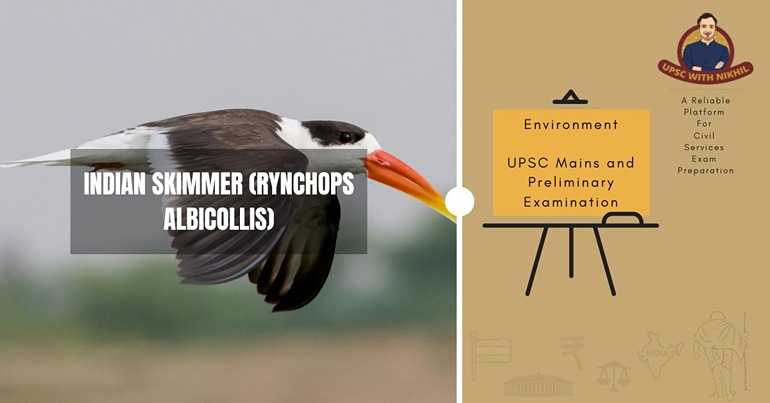Indian Skimmer (rynchops Albicollis)
About Indian Skimmer
• Common Names: Indian skimmer, Indian scissors bill
• Kingdom: Animalia
• Phylum: Chordata
• Class: Aves
• Order: Charadriiformes
• Family: Laridae
• Genus: Rynchops
• Species: albicollis
Conservation Status:
• Endangered: IUCN
• Not listed: CITES
• Not listed: IW(P)A
• Not listed: U.S ESA
Distribution Of Indian Skimmer:
The Indian skimmer can be found in the coastal estuaries of western and eastern India, where it is more common in the winter. Larger, sandy lowland rivers, lakes, and nearby marshes are its main habitats. During the non-breeding season, estuaries and coastlines are also where you can find it.
Behavior, Habitat, And Characteristics:
• 40–43 cm is the maximum length of the Indian Skimmer.
• It has a long, thick, deep orange bill with a yellow tip, a longer lower mandible, and black upper and lower portions with a white forehead, collar, and lower sections.
• When flying, it has a short forked tail with blackish center feathers and white trailing edges to its wings.
• Non-breeders have browner upper portions and are duller overall.
• Juveniles have a dusky orange bill with a blackish tip, a paler, more brownish-grey mantle, a whitish to pale buff fringed scapular, and wing coverts.
• Their crown and nape have dark mottling.
• On big, exposed sandbars and islands, it breeds colonially.
• During the breeding season, between February and May, colonies of mated pairs can be seen nesting on sandy islands or open sand banks, frequently accompanied by other birds like Terns.
• It consumes fish that live on the surface as well as tiny crustaceans and insect larvae.
• In flight and when startled, it particularly makes nasal kap or kip notes.
Major Dangers:
Degradation of the habitat:
The loss of this species is mostly attributable to the exploitation and deterioration of rivers and lakes by fishing, transportation, residential usage, irrigation projects, and contamination from agricultural and industrial pollutants, as these causes have decreased reproductive and foraging success.
Rises in disturbance that are excessive and broad:
The National Chambal Sanctuary in Uttar Pradesh has suffered as a result of the damming of the Chambal River in upstream Rajasthan because the lower water levels have made breeding islands more accessible to cattle and predators (Sundar, 2004).
Predation:
Breeding colonies have been observed to be destroyed by stray and domestic dogs, corvid predators including House crows (Corvus splendens), and other factors (Siddiqui et al., 2007).


